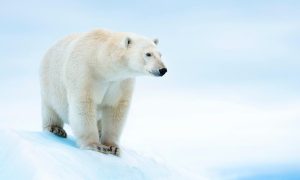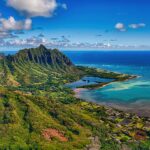The polar bear (Ursus maritimus) is an iconic and majestic creature that is synonymous with the Arctic region. Known for its powerful presence and impressive adaptations, the polar bear captures the imagination of people around the world. In this blog, we will explore 15 fascinating facts about polar bears, shedding light on their physical characteristics, behavior, habitat, and conservation status.

- Largest Land Predator: The polar bear holds the title for being the largest land predator on Earth. Adult males can weigh up to 1,500 pounds (680 kilograms) and stand over 10 feet (3 meters) tall when on their hind legs.
- Arctic Residents: Polar bears are native to the Arctic region, specifically the areas surrounding the North Pole. They inhabit the icy landscapes of countries such as Canada, Greenland, Russia, Norway, and the United States (Alaska).
- Ice-Dependent Species: Polar bears depend on sea ice for their survival. They use the ice as a platform to hunt seals, their primary food source, and as resting areas during long swimming sessions.
- Adapted for Cold: Polar bears have a thick layer of blubber, which acts as insulation and helps them retain body heat in freezing temperatures. Their fur appears white but is actually transparent, allowing sunlight to reach their black skin and aiding in heat absorption.
- Superb Swimmers: Polar bears are excellent swimmers, capable of covering long distances in the water. They use their powerful front paws for propulsion and their hind legs for steering, making them well-suited for their marine lifestyle.
- Opportunistic Feeders: While seals make up the majority of their diet, polar bears are opportunistic feeders and will consume a wide range of prey if available, including fish, birds, and marine mammals.
- Birth on Land: Pregnant female polar bears den in maternity dens on land to give birth and care for their cubs. These dens provide a safe and warm environment for the vulnerable newborns.
- Conservation Status: Polar bears are listed as a vulnerable species by the International Union for Conservation of Nature (IUCN). Climate change and the loss of sea ice pose significant threats to their survival, making conservation efforts crucial.
- Camouflaged Fur: The white fur of polar bears helps them blend seamlessly into their icy surroundings, making them excellent hunters. However, their skin is actually black, aiding in heat absorption.
- Patient Predators: Polar bears are patient hunters, spending long hours silently waiting by seal breathing holes or near seal haul-out sites. They use their acute sense of smell to detect seals under the ice.
- Adapted to Cold Water: Polar bears have several physical adaptations that allow them to thrive in icy waters. Their fur is water-repellent, and their nostrils can close to prevent water from entering while swimming.
- Hibernation-Like State: During the summer months, when food is scarce, polar bears may enter a state called walking hibernation. They reduce their activity and metabolic rate to conserve energy until the sea ice reforms.
- Motherly Love: Female polar bears are dedicated mothers, providing constant care and protection to their cubs. They teach them essential survival skills, such as hunting and navigating the Arctic landscape.
- Excellent Sense of Smell: Polar bears have an incredibly keen sense of smell, capable of detecting seals from miles away. This sense allows them to locate breathing holes and identify potential prey.
- Cultural Significance: Polar bears hold cultural significance for indigenous communities living in the Arctic. They are revered as powerful and spiritual beings, featuring prominently in stories, artwork, and traditional ceremonies.
The future of polar bears is closely tied to our actions in combating climate change and protecting their fragile ecosystem. By raising awareness, supporting conservation initiatives, and adopting sustainable practices, we can help secure a brighter future for these magnificent creatures and the Arctic environment they call home.



















Add Comment